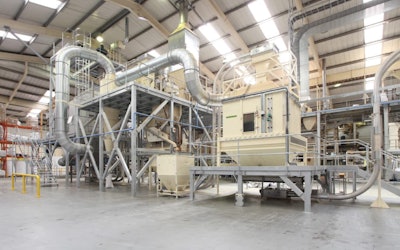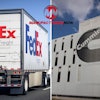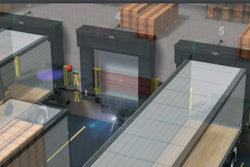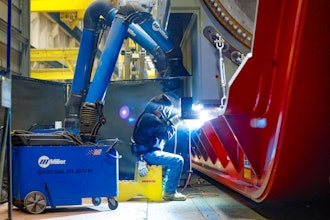
The Advantages of Tube Conveyors for Pet Food Manufacturers
Pet food manufacturers have many options for conveyers in their facilities, but not all solutions are optimal for this unique industry. Traditionally, bucket elevators have been used to transport pet food. However, they have limitations in efficiency and are at risk for contamination because they are difficult to fully clean and sanitize. Enclosed tubing offers a better solution. It’s easier to clean and can be placed back in service more quickly. Let’s take a look at the differences between bucket elevators and enclosed tubing for transfer of materials in pet food manufacturing. Bucket elevators carry bulk materials in vertical or inclined paths through use of an endless belt, a chain or chains to which buckets are attached, loading and discharging machinery, a drive arrangement, and supporting frame or casing. They are available in a variety of shapes, weights, and sizes, and may use centrifugal or continuous buckets. Buckets and belts can often cause spills, require frequent maintenance, have limited layout options, and require a lot of space to operate. Perhaps most importantly, they are not easy to clean thoroughly. Finding the most sanitary and flexible system often leads pet food manufacturers to choose enclosed tubing. Enclosed tubing made of stainless steel is naturally corrosion resistant. In order to comply with food grade regulations set by the US Food and Drug Administration (FDA), the Food Safety Modernization Act (FSMA), and the Federal Food Drug and Cosmetic Act (FFDCA), pet food manufacturers must also periodically clean their transport systems. In order to meet these key sanitary standards, the steel used in the tube conveyors may incorporate a special finish that makes it easier to clean and sanitize. There are a number of different stainless steel alloys on the market with different properties. Alloy 304 is resistant to most corrosives and Alloy 316 even more so. Cablevey uses both. Sanitary compliance is one of the biggest concerns for pet food manufacturers. Many types of ingredients have to be moved throughout the production process. These materials must meet the same sanitary requirements as human food. It’s economical and efficient to have a system that offers a flexible layout and that’s easy to clean and operate. Traditional buckets are difficult to keep clean, and lead to downtime when being serviced. Enclosed tubes remove most of these sanitary compliance concerns. Cablevey Pet Food Conveyor Systems are suitable for moving all sorts of pet food materials and mixes. No matter what form your materials take, Cablevey can move them in a gentle and sanitary manner. Your company’s pet food conveyors can be engineered to service any part of the production process, from processing to mixing to packaging. Enjoy convenience, less downtime, and full sanitary compliance with Cablevey. Learn more about Cablevey’s Pet Food Conveyor Systems by watching a video at cablevey.com/tube-conveyor-uses/feed-conveyor-system/pet-food-conveyor/.




















